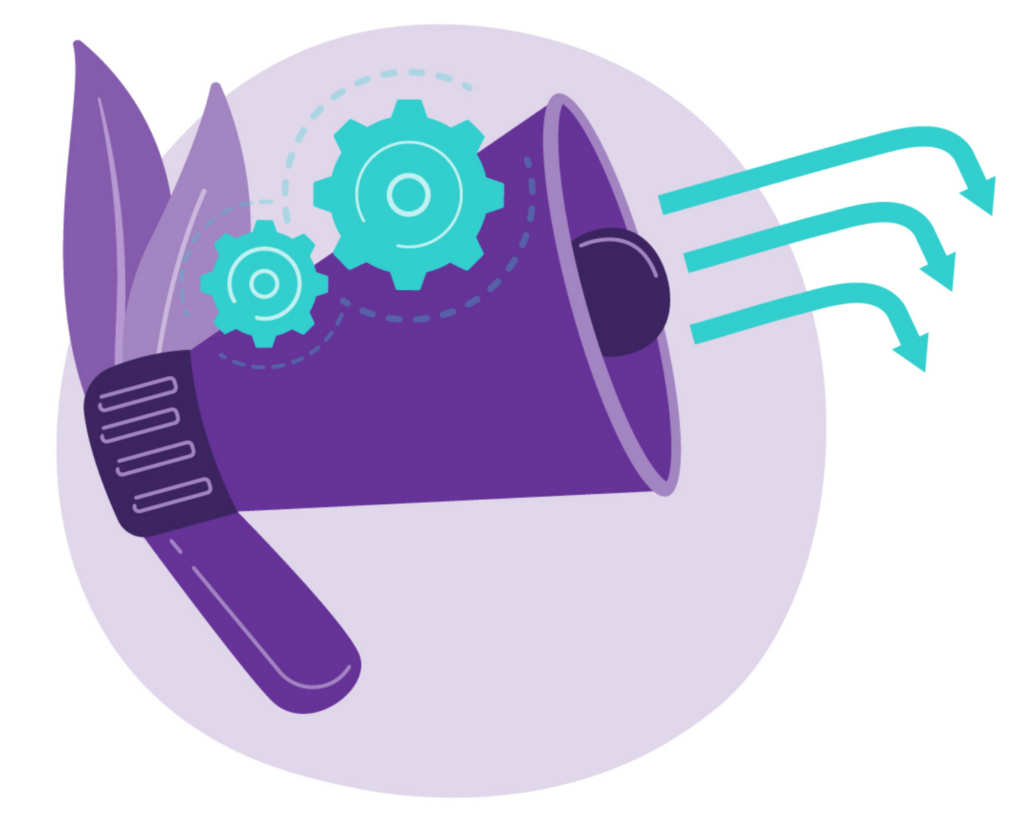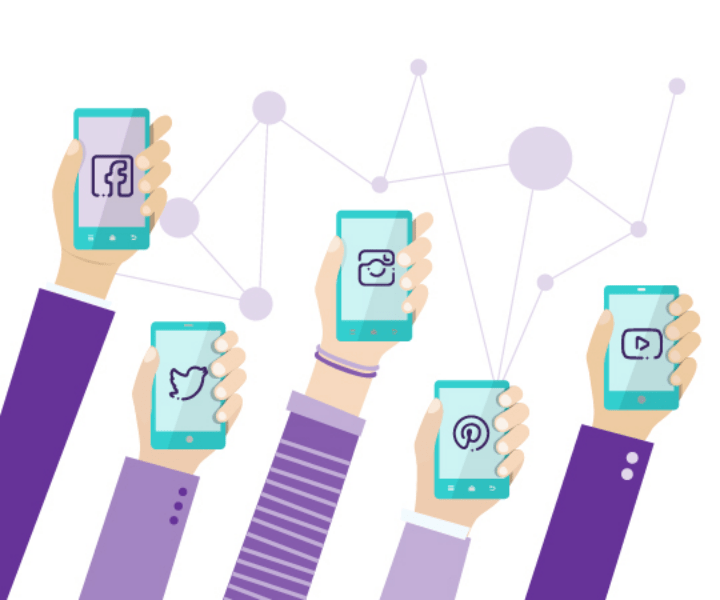It’s no secret that the organic reach of posts made to Facebook pages is low and has been for years. But does posting through third-party apps exacerbate the issue as is persistently believed? The short answer is no, not directly, but there are other things to consider when deciding whether to use a third-party app to populate your Facebook page. To learn more, read on or listen to the audio.
Topics covered
Facebook used to penalise 3rd-party apps

Part of the reason so many people believe this myth is that Facebook did penalise posts made through 3rd-party apps in the past. But a change made in 2011 put a stop to that: “…we recently made a fix that added more signals to detect good quality posting behaviour. This should improve the situation with the distribution of posts coming from third-party apps in the News Feed” said Facebook development consultant, Matt Trainer. Buffer covered that announcement quite well.
This should be enough to convince most that Facebook doesn’t penalise 3rd-party apps. But if that were the case, I wouldn’t feel the need to write this article.
The rumours persisted so much that brands like Buffer ran experiments in an attempt to reassure marketers and businesses that they wouldn’t harm their social performance if they used social media scheduling tools.
The use of third-party apps can reduce engagement

I suspect the myth has persisted due, at least to some extent, to some confusion between reach and engagement.
The two are quite different.
Reach is a measure of how many feeds a post is displayed on. Engagement, on the other hand, measures how many people have interacted with a post by liking or commenting on it, for example. The two are related to some extent because when people comment or like a post, their friends are more likely to see the content on their own feeds. The Facebook algorithm also recognises that content as being more interesting or valuable and so increases its priority. Both of these things can increase reach.
Now, it has been shown that posting through third-party apps can reduce engagement. For example, BuzzSumo analysed 500 million Facebook posts and found, among other things, that posting through third-party apps can result in nearly 90% less engagement when compared with posting to Facebook directly. Mari Smith produced a good summary of the data.
If you understand the relationship between reach and engagement, you’ll realise this doesn’t mean your organic reach will be negatively affected directly by posting via a third-party app. If you’re not careful though, it could reduce post engagement and thus indirectly reduce your organic reach.
It’s important to note that posting through 3rd-party apps doesn’t always result in reduced engagement. For example, Sendible retrospectively analysed the engagement rates achieved by a range of Facebook pages, and found that posts published by 3rd-party apps actually had higher engagement rates. Of course, Sendible has a vested interest in this result, so we have to take it with a grain of salt. But I and many other marketers have seen for ourselves that engagement isn’t inherently dependent on whether posts were published natively or via a 3rd-party tool. It’s the quality of the posts that makes a big difference.
How to avoid losing engagement and organic reach when posting through 3rd-party apps
There are a number of reasons why posts scheduled through 3rd-party apps might have a lower engagement and thus might have a lower reach than those posted directly on Facebook:
- Content is posted to a number of platforms and thus isn’t tailored for Facebook.
- In particular, images are less likely to be optimised specifically for Facebook, and if they don’t display as well in a feed, people will be less likely to engage with them.
- Scheduled content might be posted too long after interest in a story or issue peaks.
- Posts may look automated and certain types of users (such as those who specifically want to engage with a brand) will be less likely to want to engage with posts that look automated.
- Page owners review comments less frequently, resulting in delayed and often reduced responsiveness (when users comment on posts, page owners will usually ‘like’ each comment and will often respond to them. Users also often respond to those responses with secondary (and tertiary etc.) comments. But if page owners delay or halt their engagement with these comments, secondary etc. comments will dry up.).
- There is a chance that some people posting through 3rd-party apps create less engaging content.

Luckily, each of these issues has a simple solution that you can implement when posting to Facebook:
- Tailor each Facebook post to the platform and your specific audience on that platform. Just because you’re scheduling something through an app doesn’t mean that the content has to be the same for each platform. There’s nothing wrong with posting about the same idea to multiple platforms, just make sure the specific posts are tailored. In particular, take the extra time to ensure your pictures are optimised for each platform (they all have different optimum sizes etc.). There are even tools that allow you to quickly resize a given image to optimise it for different platforms. So if your chosen image is just as relevant to each platform you use, it may take only seconds to optimise it.
- The easiest way around this is to use the ‘post now’ feature of your chosen 3rd-party app (most have them) to deliver posts that are time critical rather than scheduling them or adding them to a queue of posts. You can still schedule and queue evergreen content, and other content that isn’t time sensitive. If that means you end up with extra posts on a given day occasionally, that’s probably a small price to pay for keeping up with viral topics.
- Create posts with the same mindset as you would when direct posting. Just because you’re scheduling them in advance, doesn’t mean you should spend less time finessing them. If this means creating posts in smaller batches to overcome fatigue then so be it. Following the second solution above will also help with this. There may have to be some compromise though. You will want to post content when your users are most likely to be viewing it. If this is outside of business hours (or worse, while you’re normally asleep), you have to schedule your posts but it is then obvious to customers that you scheduled the post. You may have to assess whether posting at the optimal time is more or less important than people knowing that you’ve automated your posts. Some businesses may be able to post most content outside of business hours while restricting certain content that can’t be seen to be automated to business hours posting.
- You use a 3rd-party tool because you want to save time and perhaps because you want to avoid being distracted by your own social media feeds. Unfortunately, you do have to spend some time on your social media accounts if you want to stay responsive. You can save time by using a tool, such as HootSuite, that enables you to view and respond to comments on multiple feeds all in one place. But you’ll still have to spend time regularly checking your page either directly or using a tool. I recommend checking at least once a day but be guided by your specific audience. A day will be too long for some, or even many, pages. If you don’t want to spend time doing this, either hire a social media manager to do it for you or consider whether social media is really the best thing for your business.
- The solution to this is similar to point three. Craft posts with the same care and precision regardless of how you plan to post them. If you find this impossible, consider foregoing a third-party app and instead using a calendar and reminder system to prompt you to create and post content when required. Again, as with point 3, if the optimal posting time is when you’re unavailable, you’ll need to assess what your highest priorities are.
Case study

Scott Ayres did a nice little experiment to investigate the effect of posting through third-party apps on organic Facebook reach. While it’s not an exceptionally rigorous experiment, it’s better than many others out there and does offer a nice little case study. He later repeated the experiment and got very similar results.
By comparing posts delivered to three Facebook pages via third-party apps and Facebook itself, he concluded that there was little difference between the two. If anything, posts delivered through third-party apps had slightly higher reach (though I suspect this wasn’t a statistically significant difference).
This corroborates Facebook’s claim that it does not penalise third-party app posting. It also shows that posting through third-party apps does not have to result in reduced reach as a result of a reduction in engagement. While Scott didn’t provide engagement data for his posts, I suspect he remained just as engaged with his pages regardless of whether he was posting using an app or through Facebook. Of course, the fact that he rotated posting methods throughout the experiment contributed to that. It would be interesting to see if he received the same results if he posted directly for a few weeks and then posted exclusively through apps for another few weeks.
Regardless, if you remain conscious of the potential issues associated with posting through third-party apps, you can ensure the practice doesn’t have any negative impacts on your reach and engagement.
Does posting via 3rd-party apps affect reach and engagement on other social platforms?

Some of the data I’ve referenced in this article also looked at reach and engagement on other social platforms, like Twitter. The results are largely the same as for Facebook — reach isn’t directly impacted by posting natively or via 3rd-party apps and engagement can be reduced when posting via 3rd-party apps if you’re not careful and not invested in responding to your audience. But that’s a consequence of the way some people use scheduling tools rather than a feature of social platform feed algorithms.
Nowadays, scheduling social posts and measuring performance via a 3rd-party tool is so ubiquitous that it’s not in the best interests of social platforms to penalise the practice. So, as long as you’re willing to spend the time and effort to respond to your audience (or pay for someone to do it for you), there should be no reason not to take advantage of the many benefits such 3rd-party scheduling tools offer.
